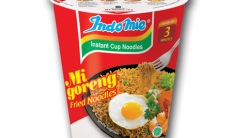Garment makers in Vietnam face shakeout
International Herald Tribune, France
HO CHI MINH CITY Vietnam’s $3 billion garment industry, which supplies Nike and Limited Brands, may see a surge in bankruptcies because of rising labor costs and competition from China, the nation’s biggest clothing maker said.
Half of Vietnam’s 2,000 garment factories could file for bankruptcy in the next two years, said Le Viet Toa, vice general director at Viettien. That may offer acquisition opportunities for the state-owned company and help increase its market share ahead of a planned share sale next year, he said in the interview.
“Only the big companies will survive,” Toa said in an interview last week at his office in Ho Chi Minh City.
Vietnamese workers are leaving garment factories for better-paying office jobs, hurting the industry as Chinese rivals cut costs by moving production to poorer inland provinces.
The industry is Vietnam’s second- biggest foreign-exchange earner after crude oil, and its decline may curb growth in an economy the government projects will expand 8 percent annually in the next decade.
“Vietnam has done very well through very good workmanship and lower labor costs, but the lower labor cost is a thing of the past,” said Horst Geicke, chairman of VinaCapital in Ho Chi Minh City. “It’s a sunset industry.”
Vietnam’s one million apparel factory workers make about $100 a month, almost twice the $55 minimum wage. More are turning to higher-paying jobs in banks and hotels, Toa said.
VinaCapital estimates that labor costs in Vietnam are about 20 percent lower than coastal cities in China. Wages in China’s rural areas, though, are about 10 percent to 15 percent lower than in Ho Chi Minh City.
To cut costs, Viettien said the company and other garment manufacturers are expanding into rural provinces, where labor costs are about 70 percent of those in Ho Chi Minh City, the country’s biggest city.
Viettien, which makes shirts and other apparel for American Eagle Outfitters and Nike, said it had purchased two failed Vietnamese factories this year, adding to its 36 manufacturing sites in the country.
The new sites will help increase its factories in the provinces to 70 percent of its manufacturing locations in three years, from about half now, Toa said.
Viettien expects sales to increase 19 percent this year to $250 million. Exports make up 90 percent of the company’s revenue. Vietnamese apparel shipments to the United States rose 31 percent to $1.51 billion in the first half.
The industry could also benefit from the Vietnam’s expected entry into the World Trade Organization this year.
“WTO will provide better access for Vietnam to the big markets, Europe and the U.S.,” said Jonathan Pincus, senior country economist at the United Nations Development Program in Hanoi.
“Vietnam could really rapidly increase its exports of those commodities to the big international markets and that could provide a lot of employment,” Pincus said.
Still, gains from efforts to cut costs and from consolidation may not be enough to boost the competitiveness of an industry that lacks a domestic textile manufacturing base. Vietnamese apparel makers have to import most of their fabric, paying more than rivals in China who can source materials locally.
“Frankly, the textile in Vietnam is still very weak, weak in quality and quantity,” Toa said. “My big worry is the textile problem.”
Apparel buyers like Limited Brands, which owns Bath & Body Works, Victoria’s Secret and Express chains, say not having the raw materials produced in Vietnam is a disadvantage.
“Everybody would give you a good price, everybody would give you good quality,” said Jocelyn Tran, country manager at Limited Brands’ unit, MAST Industries. “There’s nothing that Vietnam makes that China or India cannot make. It’s going to be tough.”
HO CHI MINH CITY Vietnam’s $3 billion garment industry, which supplies Nike and Limited Brands, may see a surge in bankruptcies because of rising labor costs and competition from China, the nation’s biggest clothing maker said.
Half of Vietnam’s 2,000 garment factories could file for bankruptcy in the next two years, said Le Viet Toa, vice general director at Viettien. That may offer acquisition opportunities for the state-owned company and help increase its market share ahead of a planned share sale next year, he said in the interview.
“Only the big companies will survive,” Toa said in an interview last week at his office in Ho Chi Minh City.
Vietnamese workers are leaving garment factories for better-paying office jobs, hurting the industry as Chinese rivals cut costs by moving production to poorer inland provinces.
The industry is Vietnam’s second- biggest foreign-exchange earner after crude oil, and its decline may curb growth in an economy the government projects will expand 8 percent annually in the next decade.
“Vietnam has done very well through very good workmanship and lower labor costs, but the lower labor cost is a thing of the past,” said Horst Geicke, chairman of VinaCapital in Ho Chi Minh City. “It’s a sunset industry.”
Vietnam’s one million apparel factory workers make about $100 a month, almost twice the $55 minimum wage. More are turning to higher-paying jobs in banks and hotels, Toa said.
VinaCapital estimates that labor costs in Vietnam are about 20 percent lower than coastal cities in China. Wages in China’s rural areas, though, are about 10 percent to 15 percent lower than in Ho Chi Minh City.
To cut costs, Viettien said the company and other garment manufacturers are expanding into rural provinces, where labor costs are about 70 percent of those in Ho Chi Minh City, the country’s biggest city.
Viettien, which makes shirts and other apparel for American Eagle Outfitters and Nike, said it had purchased two failed Vietnamese factories this year, adding to its 36 manufacturing sites in the country.
The new sites will help increase its factories in the provinces to 70 percent of its manufacturing locations in three years, from about half now, Toa said.
Viettien expects sales to increase 19 percent this year to $250 million. Exports make up 90 percent of the company’s revenue. Vietnamese apparel shipments to the United States rose 31 percent to $1.51 billion in the first half.
The industry could also benefit from the Vietnam’s expected entry into the World Trade Organization this year.
“WTO will provide better access for Vietnam to the big markets, Europe and the U.S.,” said Jonathan Pincus, senior country economist at the United Nations Development Program in Hanoi.
“Vietnam could really rapidly increase its exports of those commodities to the big international markets and that could provide a lot of employment,” Pincus said.
Still, gains from efforts to cut costs and from consolidation may not be enough to boost the competitiveness of an industry that lacks a domestic textile manufacturing base. Vietnamese apparel makers have to import most of their fabric, paying more than rivals in China who can source materials locally.
“Frankly, the textile in Vietnam is still very weak, weak in quality and quantity,” Toa said. “My big worry is the textile problem.”
Apparel buyers like Limited Brands, which owns Bath & Body Works, Victoria’s Secret and Express chains, say not having the raw materials produced in Vietnam is a disadvantage.
“Everybody would give you a good price, everybody would give you good quality,” said Jocelyn Tran, country manager at Limited Brands’ unit, MAST Industries. “There’s nothing that Vietnam makes that China or India cannot make. It’s going to be tough.”
HO CHI MINH CITY Vietnam’s $3 billion garment industry, which supplies Nike and Limited Brands, may see a surge in bankruptcies because of rising labor costs and competition from China, the nation’s biggest clothing maker said.
Half of Vietnam’s 2,000 garment factories could file for bankruptcy in the next two years, said Le Viet Toa, vice general director at Viettien. That may offer acquisition opportunities for the state-owned company and help increase its market share ahead of a planned share sale next year, he said in the interview.
“Only the big companies will survive,” Toa said in an interview last week at his office in Ho Chi Minh City.
Vietnamese workers are leaving garment factories for better-paying office jobs, hurting the industry as Chinese rivals cut costs by moving production to poorer inland provinces.
The industry is Vietnam’s second- biggest foreign-exchange earner after crude oil, and its decline may curb growth in an economy the government projects will expand 8 percent annually in the next decade.
“Vietnam has done very well through very good workmanship and lower labor costs, but the lower labor cost is a thing of the past,” said Horst Geicke, chairman of VinaCapital in Ho Chi Minh City. “It’s a sunset industry.”
Vietnam’s one million apparel factory workers make about $100 a month, almost twice the $55 minimum wage. More are turning to higher-paying jobs in banks and hotels, Toa said.
VinaCapital estimates that labor costs in Vietnam are about 20 percent lower than coastal cities in China. Wages in China’s rural areas, though, are about 10 percent to 15 percent lower than in Ho Chi Minh City.
To cut costs, Viettien said the company and other garment manufacturers are expanding into rural provinces, where labor costs are about 70 percent of those in Ho Chi Minh City, the country’s biggest city.
Viettien, which makes shirts and other apparel for American Eagle Outfitters and Nike, said it had purchased two failed Vietnamese factories this year, adding to its 36 manufacturing sites in the country.





